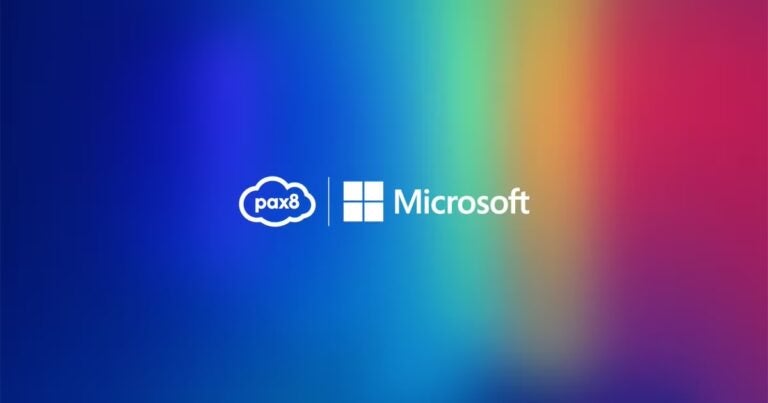Running a successful managed service provider (MSP) business is no easy feat. As an MSP owner or manager, you face numerous challenges in maintaining profitability and increasing company value. One of the key metrics that can significantly impact your bottom line is service gross margin — the difference between gross revenue and the costs associated with delivering services. It serves as a critical measure of your business’s health and guides decisions for future growth.
There are four levers of gross margin that directly impact the profitability of your MSP business: engineer pay rate, billing rate, billable utilization, and fixed fee effectiveness. Each lever plays a significant role in shaping your financial performance, but mastering this fourth lever can have a substantial impact on your bottom line.
The first three levers: engineer pay rate, billing rate, and billable utilization
Before diving deep into fixed fee effectiveness, let’s briefly explore the first three levers.
Engineer pay rate
As one of your most significant expenses, the engineer’s pay rate needs to be balanced to increase gross margin. While lowering engineer pay may increase margins, there are limits to how low you can go while maintaining a skilled workforce. This cost includes salary, benefits (health, 401K, etc.), payroll expenses, and taxes.
Billing rate
Billing rate involves determining the price charged for services rendered. Increasing the billing rate directly increases gross margin, but it is essential to consider market prices, perceived value, and technical expertise – because we can’t always charge as much as we would like. Modifiers to this rate include after-hours work, emergency work, and fixed-fee work (technical vs. professional).
Billable utilization
Utilization refers to the effective usage of resources and plays a crucial role in optimizing profitability. By maximizing billable utilization and minimizing non-billable time, MSPs can achieve higher gross margins. Setting realistic utilization targets and accurately tracking time are crucial for effective management. There are also limits to utilization as you always need to have a good sustainable target or you risk losing good employees.
The power of the fourth lever: fixed fee effective ratio
Among the four levers, the fixed fee effective ratio has the most significant impact on your MSP’s profitability. This lever specifically applies to agreements with monthly recurring revenue (MRR), making it particularly relevant for MSPs focusing on long-term service contracts.
Understanding the fixed fee effective ratio
The fixed fee effective ratio measures the efficiency of your fixed fee agreements by comparing the billed service revenue to the shadow billable rate — the amount that would have been billed based on time and materials. This metric helps you assess how efficiently you are delivering services under fixed fee contracts, providing valuable insights into your MSP’s performance.
Why is it important?
Using fixed fee effective ratios to manage client agreements is essential for an MSP. It helps put into perspective how well you are scaling your resources across multiple clients. It can also be used to incentivize your techs to resolve tickets immediately rather than hand them off or leave them unfinished.
Simply put, by understanding and optimizing this ratio, you can ensure that your fixed fee agreements are structured in a way that maximizes revenue while minimizing costs. In other words, it allows you to deliver services efficiently while meeting or exceeding the expectations set forth in your agreements.
How to calculate the fixed fee effective ratio
The formula for the fixed fee effective ratio is as follows:
Fixed fee effective ratio = billed service revenue / shadow billable
For example, an MSP bills its client $1,000 for services rendered. The engineer working with the client has a shadow billable of eight hours logged at a $100/hour rate, or $800, so the fixed fee effective ratio is $1,000 divided by $800, or 1.25.
This gets more complicated the more additional resources are involved but it is still an excellent measurement tool. If you have three engineers working with one client, you’ll need to calculate each of their effective ratios and then assign those the appropriate weight, based on the number of hours they specifically worked with the client.
A fixed fee effective ratio of 1 is close to par efficiency, meaning you are billing close to what you would have charged based on time and materials. If the ratio is greater than 1, you are billing more than you would have charged based on time and materials, making it a profitable agreement. Conversely, a ratio less than 1 indicates inefficiency and potential loss of revenue.
Using the ratio to rank clients
It may seem strange to rank your clients because ideally everyone would get the same level of service, regardless of who they are, but this just isn’t the case. That’s because not all clients are created equal, and some will require more time and resources.
We can use the effective ratios per client to rank them and their agreements. Oftentimes, we might find we’re stuck spending 80% of our time with the bottom 20% of our client base, when it really should be the other way around. Your ranking can help you reprioritize your efforts or determine which clients to keep or fire. Ideally, you should focus on the middle and upper range of clients with an effective ratio of .8 to 2. Also, pay attention to the top 5% of the clients (with the highest effective ratios) because they are your most profitable, and you run the greatest risk of losing them to a competitor if they do not feel they are worth your time.
Improving the fixed fee effective ratio
Improving the effective ratio requires a combination of strategic decisions and operational excellence. Here are some strategies to consider:
- Optimize service delivery: Ensure that your team effectively utilizes their time and resources to deliver services. Minimize non-billable time and prioritize billable activities to increase efficiency.
- Track time accurately: Accurate time tracking is essential for calculating the fixed fee effective ratio. Avoid the common operational pitfalls of poor time tracking to ensure you have accurate data for analysis.
- Identify inefficiencies and skill deficits: Take a look at your data. Where do things break down or take longer to finish? Address bottlenecks, the escalation process, and any skill deficiencies. Invest in training to resolve these issues and improve your team’s performance.
- Optimize the tech stack: Are your most difficult or time-consuming clients working with outdated technology? Propose a project to improve their tech stack so that it aligns better with your other clients and improves efficiency all around.
- Review agreements: Regularly evaluate your fixed fee agreements to ensure they align with the actual effort required to deliver services. Adjust agreements as needed to ensure fair compensation for your services. Are your lower-tier clients up for a new contract or that tech stack conversation? If the answer is “no,” it may be time to move on from that client so you can spend more time on the more profitable ones.
Putting it all together
Mastering the four levers of service gross margin is a critical aspect of managing a successful MSP business. While engineer pay rate, billing rate, and billable utilization are all essential, the fixed fee effective ratio is the most impactful in driving profitability.
To reach a higher level of maturity, you’ll find that moving from a predominantly break-fix to an MRR model is generally more profitable in the long run. And using data gleaned from implementing the four levers of gross margin helps you make more educated decisions that help you continue growing your business.
[ifso id=”3329″]





